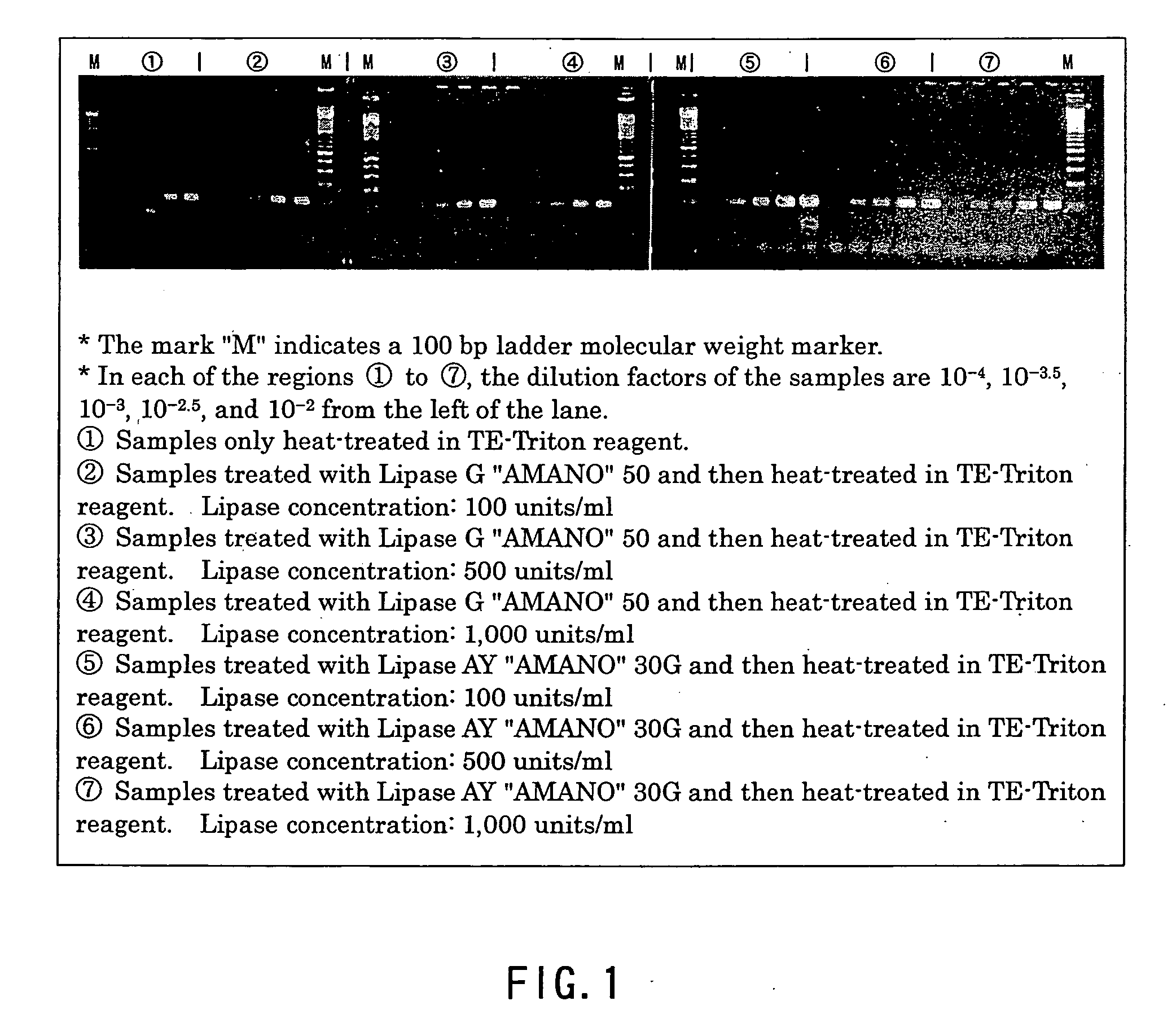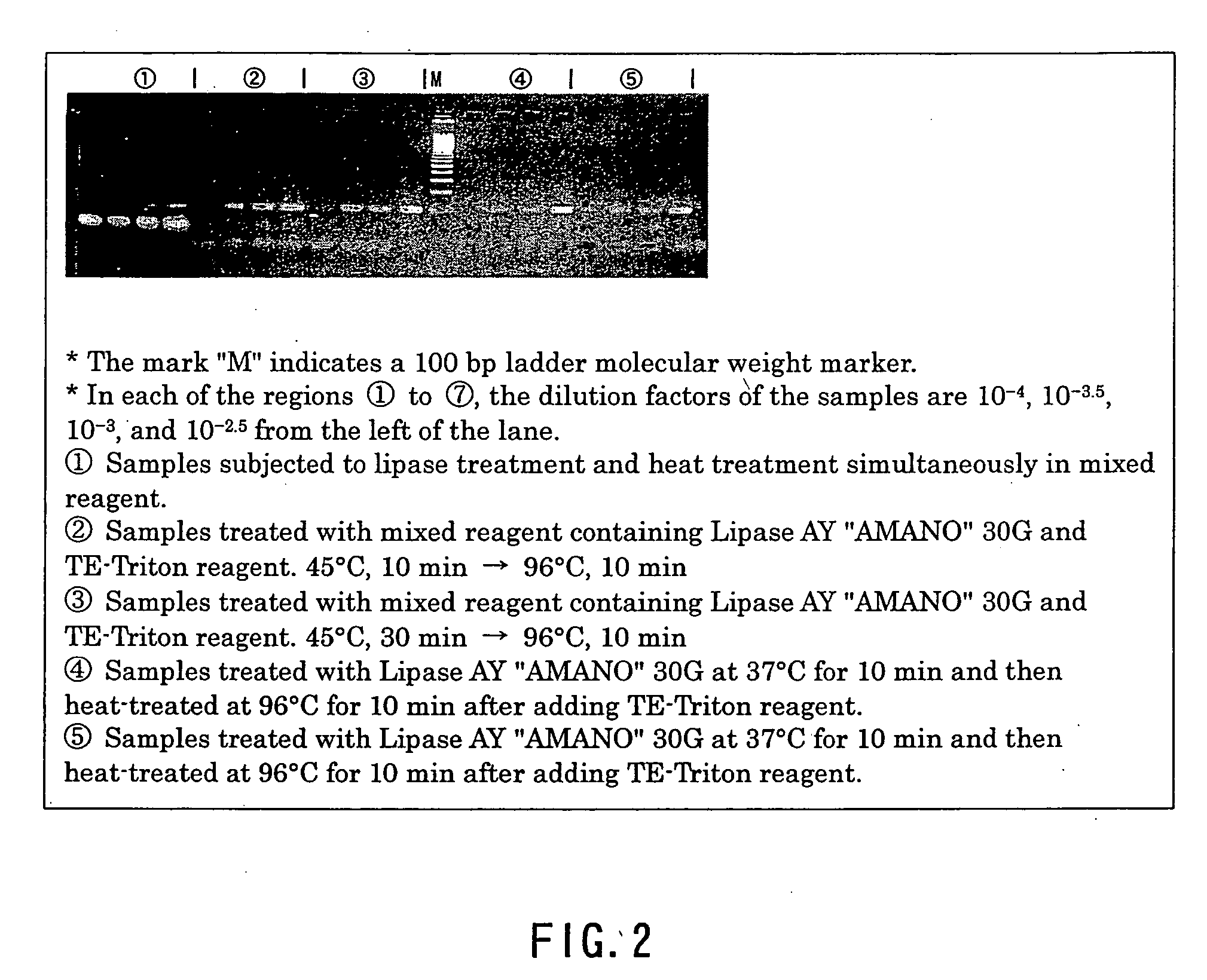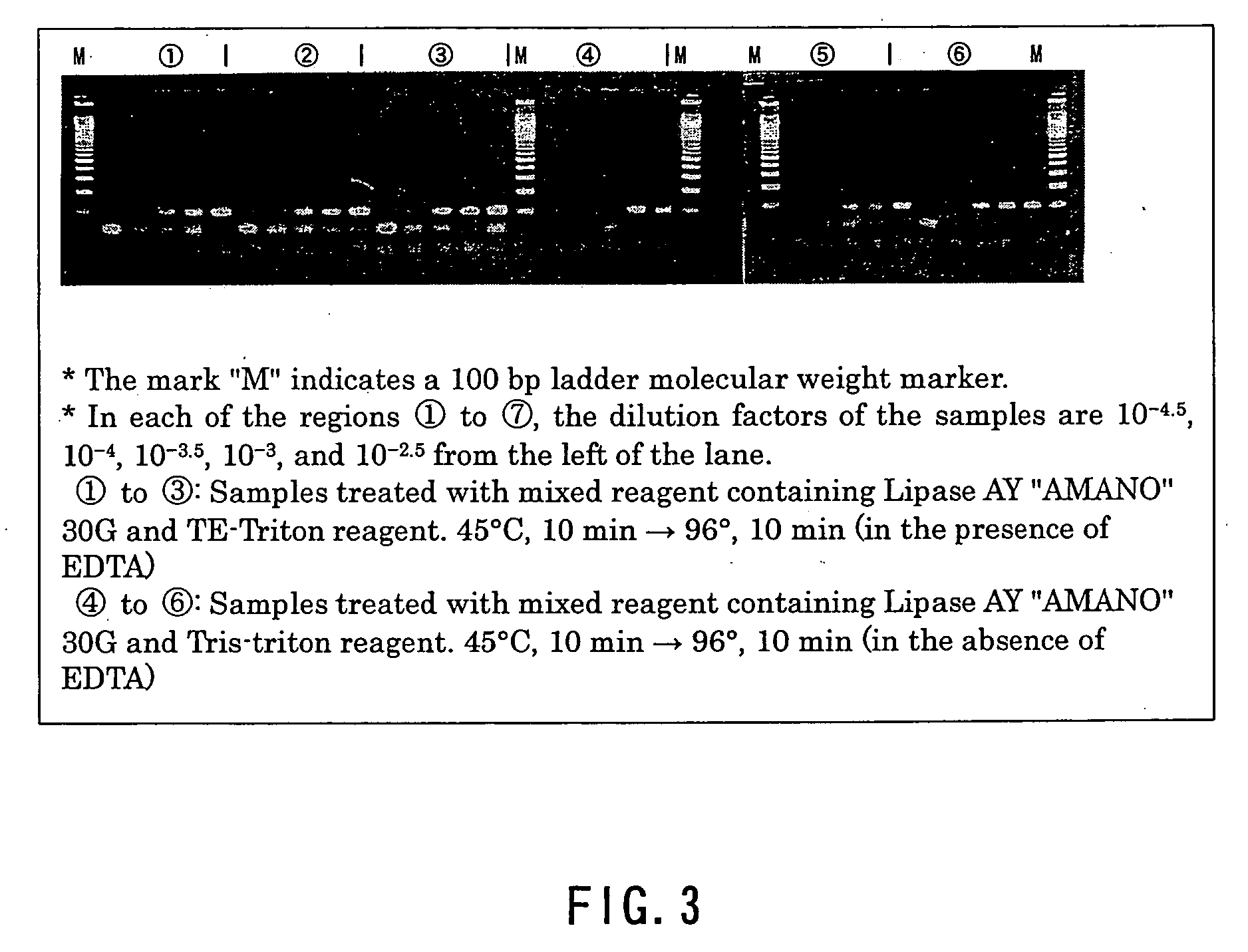Method of effecting lysis of acid-fast bacteria and method of performing gene amplification or detection therewith
a technology of acid-fast bacteria and lysis method, which is applied in the field of lysing acid-fast bacteria, can solve the problems of insufficient lysis method, complicated operation, and longer treatment period, and achieve the effects of easy and fast lysing, safe operation, and low risk
- Summary
- Abstract
- Description
- Claims
- Application Information
AI Technical Summary
Benefits of technology
Problems solved by technology
Method used
Image
Examples
example 2-1 , example 1-4
Example 2-1, Example 1-4
[0048] A product named Lipase G “AMANO” 50 (Amano Pharmaceutical Co., Ltd.) and a product named Lipase AY “AMANO” 30G (Amano Pharmaceutical Co., Ltd.) were dissolved in 10 mM HEPES buffer (pH 7.0) to prepare lipase reagent solutions. Furthermore, a lysis reagent solution was prepared by adding a product named Triton X-100 (Nacalai Tesque, Inc.) to TE buffer (10 mM Tris and 1 mM EDTA, pH 8.0) and sterilizing the mixture by high-pressure steam in an autoclave (the thus-obtained lysis reagent solution is hereinafter referred to as “TE-Triton reagent”). A culture of BCG used for preparing samples was prepared by culturing BCG in a liquid culture medium for growing acid-fast bacteria (a product named MycoBroth, manufactured by Kyokuto Pharmaceutical Industrial Co., Ltd.) until the solution containing the BCG had a turbidity corresponding to #1 of the McFarland turbidity standard and then diluting the solution as necessary.
[0049] Thereafter, the resultant solution...
example 2-2 , example 2-3
Example 2-2, Example 2-3
[0054] The solution containing BCG obtained in the same manner as in the above was diluted gradually (10−4, 10−3.5, 10−3, 10−2.5) with phosphate buffer (pH 6.8). The resultant diluents were used as test solutions. Subsequently, 100 μl of the test solutions with the above-described concentrations were poured into screw capped tubes, respectively, and then centrifuged (10,000 g, 15 minutes) to prepare pellets. The pellets obtained from the respective test solutions were used as samples to be subjected to a lysis reaction. On the other hand, Lipase AY “AMANO” 30G was added to the above-described TE-Triton solution so that its concentrations became 500 units / ml to prepare a lysis reagent solution. 100 μl of the lysis reagent solution was added to the samples. The resultant mixtures were mixed in a vortex mixer and then centrifuged slightly, followed by incubation at 45° C. The incubation was carried out for the following two different periods: 10 minutes and 30 m...
example 2-4
[0060] Triton X-100 (Nacalai Tesque, Inc.) was added to TE buffer (10 mM Tris and 1 mM EDTA, pH 8.0) and to Tris buffer (10 mM Tris, pH 8.0) so that its concentration became 1%. The resultant mixtures were sterilized in an autoclave, thus preparing a reagent containing EDTA and a reagent containing no EDTA. Hereinafter, these reagents are referred to as a TE-Triton reagent (containing EDTA) and a Tris-Triton reagent (containing no EDTA), respectively. A culture of BCG used for preparing samples was prepared by culturing BCG in a liquid culture medium for growing acid-fast bacteria (a product named MycoBroth, manufactured by Kyokuto Pharmaceutical Industrial Co., Ltd.) until the solution containing the BCG had a turbidity corresponding to #1 of the McFarland turbidity standard and then diluting the solution as necessary.
[0061] Thereafter, the resultant solution containing BCG was diluted gradually (10−4.5, 10−4, 10−3.5, 10−3, 10−2.5) with phosphate buffer (pH 6.8), thus preparing te...
PUM
| Property | Measurement | Unit |
|---|---|---|
| temperature | aaaaa | aaaaa |
| temperature | aaaaa | aaaaa |
| pH | aaaaa | aaaaa |
Abstract
Description
Claims
Application Information
 Login to View More
Login to View More - R&D
- Intellectual Property
- Life Sciences
- Materials
- Tech Scout
- Unparalleled Data Quality
- Higher Quality Content
- 60% Fewer Hallucinations
Browse by: Latest US Patents, China's latest patents, Technical Efficacy Thesaurus, Application Domain, Technology Topic, Popular Technical Reports.
© 2025 PatSnap. All rights reserved.Legal|Privacy policy|Modern Slavery Act Transparency Statement|Sitemap|About US| Contact US: help@patsnap.com



